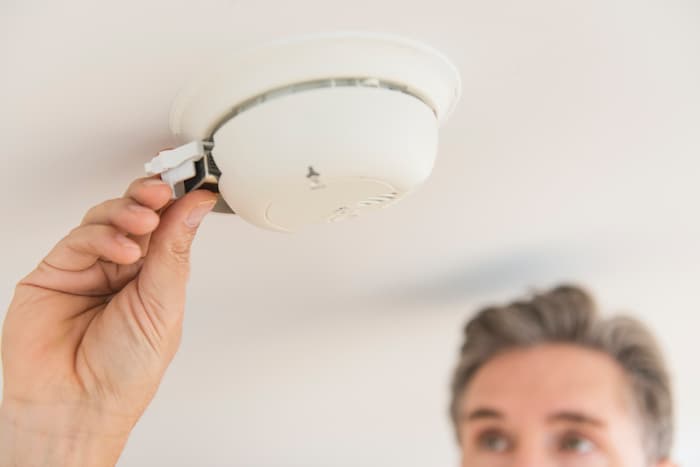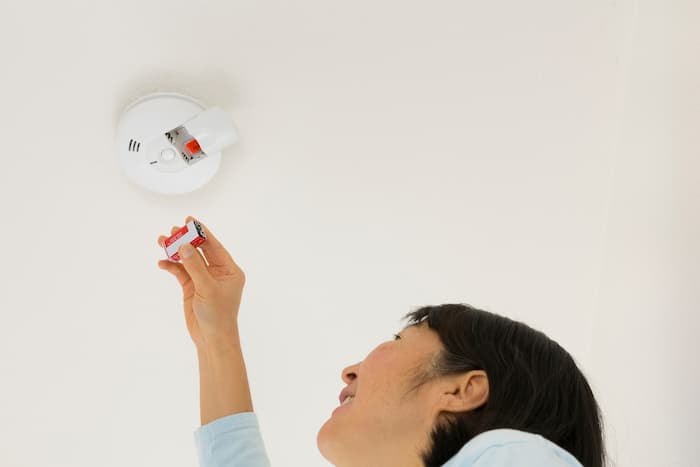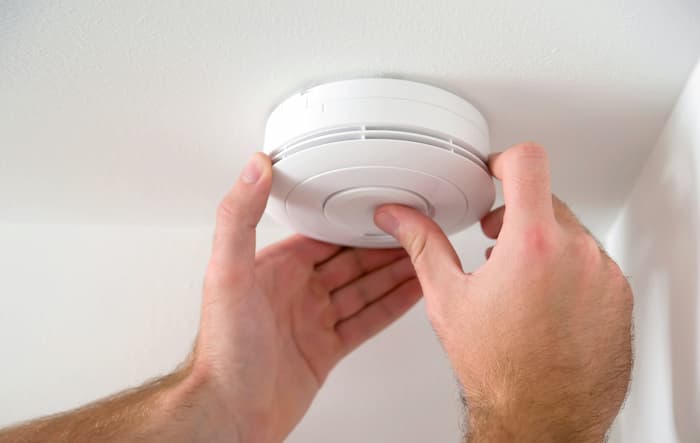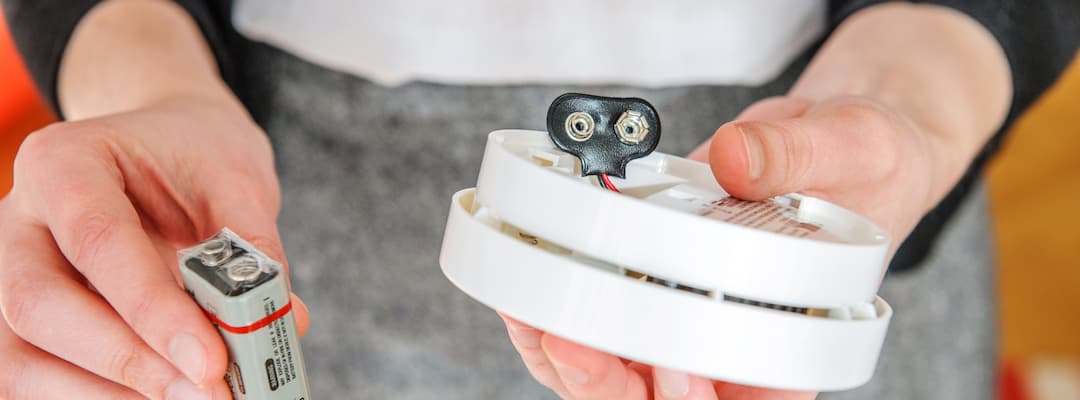Smoke alarms (also known as smoke detectors) are an integral part of reducing the risk of house fires in your home.
And for your smoke alarm to stay in good working order, it needs to be regularly maintained.
This means you’ll need to press the 'test button' to test if your smoke alarm is working each month, vacuum your smoke alarm to remove dust particles every six months and change your smoke alarm’s battery at least once a year.
In the following guide, we’ll show you how to change your smoke alarm battery using step-by-step instructions and help you keep your home’s smoke alarms up and running.
What You’ll Need to Change Smoke Alarm Batteries
Before you start make sure you have the following items:
- A ladder
- A screwdriver
- New smoke detector batteries
- Safety equipment including safety glasses, gloves, ear muffs and a mask when needed.
Step 1: Check What Type of Smoke Alarm You Have
In Australia, all smoke alarms must comply with the manufacturing Australian Standard (AS 3786-2014). Depending on which state you live in this may dictate the type of smoke alarm you should have in your home.
There are two types of smoke detectors:
- Ionisation - These alarms are more responsive to fast flame fires including fires ignited by paper or flammable liquids and use ions or electrically charged particles to help detect smoke.
- Photoelectric - These smoke alarms use a light beam to detect the presence of smoke from a smouldering fire such as a fire that has been ignited by a cigarette in bedding or furniture.
Different smoke alarm models require different types of batteries. A battery-operated smoke alarm needs to be changed at least once a year. Other types of smoke alarms are either hardwired into electricity mains or powered by a non-removable lithium battery that will need to be replaced with the smoke alarm once they expire after 10 years.
A steady green LED light indicates that you have a wired smoke detector that's connected to the electricity mains in your home. Whereas a flashing light every 30-45 seconds means your smoke alarm is battery-operated. [1]
Outside of regular maintenance, if your battery-operated smoke alarm (or battery back-ups) regularly makes a ‘chirping’ sound this will signal that the smoke alarm’s battery has stopped working and needs to be replaced.
Step 2: Detach Your Smoke Alarm from the Ceiling

If you have a battery-operated smoke detector, the first thing you’ll need to do is remove your smoke detector from its frame on the ceiling.
You can use a screwdriver to slide your smoke alarm away from the frame or twist your smoke alarm until you hear it click to reveal the compartment containing the smoke alarm batteries.
Some smoke alarm models also have a plastic lock to protect the part of the smoke alarm that contains the batteries. You’ll need a screwdriver to pry open the plastic lock and the battery compartment.
Step 3: Replace the Smoke Alarm Batteries

Once you’ve safely removed the smoke detector from its frame or the compartment covering the smoke alarm batteries, then you can take out the old battery or batteries.
Before you throw anything away, make sure you check with your local council or waste management partner to find your nearest battery collection or disposal point.
Now you can install your new battery or batteries by lining up the correct negative and positive connections labelled on your smoke alarm.
Step 4: Secure the Smoke Detector Back in Place
Once you’ve installed your new smoke alarm batteries you can slide, twist or click your smoke detector back into place.
Step 5: Test the New Batteries

Here’s how you can test your smoke detectors’ new batteries:
- Check the light on your battery-operated smoke detector flashes at least once every 60 seconds.
- Press and hold the ‘test button’ until the alarm sounds, then release it.
- If the alarm doesn’t sound you can either replace your batteries again and/or press and hold the ‘reset button’ for 15-20 seconds.
- Repeat these steps until your smoke alarm successfully sounds.
Preventing Home Hazards
Ongoing maintenance is needed for most home smoke detectors, but when it comes to battery-operated smoke alarms, the batteries must be changed at least once a year.
This ensures your smoke detector is in good working order and can properly protect your home from unsuspecting fires and other home hazards.
Before you start this process, you'll need to find out which type of smoke detector battery you have and address its specific maintenance needs. And if you decide to change or update any security devices (including smoke alarms) in your home then you should always notify your Home Insurance provider.






